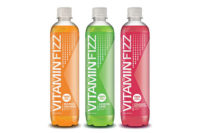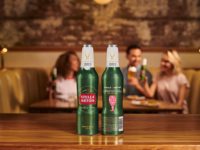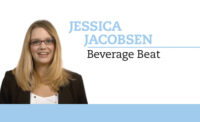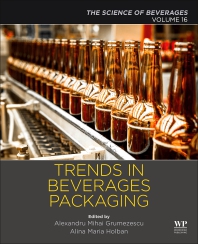Closure market creates solutions to support beverage recycling
Suppliers develop tethered caps to reduce plastic waste

Late in 2019, the Washington, D.C.-based American Beverage Association (ABA) along with leading beverage manufacturers announced the Every Bottle Back initiative, which strives to reduce the industry’s use of new plastic by making significant investments to improve the collection of the industry’s valuable plastic bottles so they can be made into new bottles. This collective effort by the beverage industry highlights the importance of retrieving and recycling plastic waste; however, it’s not just consumer-recognized brands that are playing an active role in furthering sustainability for beverage packaging.
Caps and closure suppliers also highlight the impact that sustainability is having on their market as these companies look to support an environment free of plastic waste.
“Consumers are concerned with plastic waste,” says A.J. Miller, director of marketing for Silgan Closures, Downers Grove, Ill. “The main way to reduce plastic waste it to get plastic into the correct recycling stream. To do this, Silgan Closures supports the Caps On program from the Association of Plastic Recyclers (APR).”
Miller notes that one of the ways that cap and closure suppliers are looking to address plastic waste is through tethered closures.
“The European Union’s single-use plastic directive requires that closures are tethered to bottles by 2024,” he says. “The purpose is that if the cap is attached to the bottle, it has greater chance of making it to the recycling steam versus ending up on the ground. The United States is contemplating how they will handle this concept.
“Silgan Closures consumer research show that consumers find value in closures that stay on the container,” Miller continues. “Consumers expressed that they lose their caps and closures. While driving, closures fall to the floor and roll under the seat. In the house, when a closure falls to the ground, they get picked up by kids or dogs, which can be unsafe.”
Citing the company’s research, Miller adds that consumers listed the following benefits in regards to stay-on closures:
- Convenient: “You won’t lose the cap.”
- Easy: “It’s one handed.” “You don’t have to use both hands each time you take a sip.”
- Sanitary: “It doesn’t end up on the ground.”
- Recyclable: “If it’s all attached, it has to be recyclable.”
- Safer: “Less likely to have issues when driving.”
Another way the caps and closure market is addressing sustainability measures is through the use of recycled plastic content.
“The inclusion of post-consumer resin (PCR) in closures is in demand to help with brand owner goals,” Miller says. “Closure manufactures are currently using various levels of PCR in their products and sensory testing them to see if the PCR affects taste and order.”
Closure Systems International (CSI), Memphis, Tenn., recently announced a new closure — designed for dairy and non-carbonated beverages — that incorporates these sustainable practices.
The 38-mm D-KL linerless high-density polyethylene (HDPE) closure (38D-KL) from CSI features improved application performance and drop-down tamper evidence for additional security, the company says. CSI’s 38D-KL closure delivers a sustainable solution and can be sourced with as much as 40 percent PolyCycle, CSI’s post-consumer recycled (PCR) HDPE resin. PolyCycle PCR is sourced from recycled milk and other beverage containers, providing an opportunity for closed-loop packaging and ensuring the highest quality sourcing. Both the HDPE and the PolyCycle PCR version of CSI’s 38D-KL closure are 100 percent recyclable, it says.
Additionally, the 38D-KL is precision engineered to deliver reliable performance on HDPE and PET dairy bottles. CSI’s 38D-KL is commercially available for applications in non-carbonated cold- and ambient-filled beverages and liquid dairy markets.
Crystal Lake, Ill.-based Aptar Food + Beverage also is addressing sustainability through its Flip Lid, which launched in late 2018.
Designed to promote post-use recycling, Flip Lid is tethered to the bottle throughout its lifecycle, thereby making it more likely that the closure will be collected and sent through the recycling stream with the primary package, the company says.
Aptar Food + Beverage notes that this launch is similar in importance to the stay-on tabs for the cans market that launched in the 1970s. “Because the tear-off tab was such a small piece, it was not being collected at the recycling facilities, leading to leakage,” the company stated in a press release. “This problem was addressed as the industry replaced the tear-off tab with the stay-on tab, which remains prevalent to this day.”
Appealing to consumers’ needs
Yet, sustainability is not the only attribute that consumers are looking for when it comes to beverage packaging. With on-the-go lifestyles in full swing, consumers want food and beverage products that support those lifestyles, prompting cap and closure manufacturers to design solutions that support those demands.
“Silgan Closures consumer research shows that consumers desire beverage bottles they can reseal, refill and reuse,” Miller says. “Consumers also desire the ability to consume beverages with one hand to accommodate their activities; working out, biking, driving.”
Tethered closures can become a product attribute for beverage brands, according to Miller. “Caps and closures are currently evolving with technology that attaches them to the container, which consumers perceive as convenient,” he notes.
In addition to its Flip Lid, Aptar Food + Beverage developed its sport cap UNO 38 mm. Announced in 2018, the UNO 38 mm is a one-piece closure made of PP to suit the requirements and performance of the flip-top design and to provide the option of translucent or opaque colors, the company says. Providing one-hand opening and closing, UNO is available in two 38-mm neck finishes: 3-lead and 2-lead thread starts, it says.
“UNO 38-mm by Aptar provides safety and convenience for on-the-go beverage consumption for children and active adults alike,” the company stated in a 2018 press release. “Consumers looking for natural and healthy beverages can now enjoy convenience in today’s traditional premium water brand packaging.”
However, convenience isn’t the only way that brand owners can connect with consumers. Silgan Closures’ Miller explains that caps and closures are becoming a bigger part of branding and marketing.
“Plastic, steel and aluminum closures are available in an extensive variety of colors and print options,” he explains. “Bright and bold colors can help products pop or stand out on crowded retail shelves. In contrast, with less crowded online shopping, beverage manufacturers can utilize a much larger pallet of colors versus retail. When products are displayed in their individual boxes online, colors that would typically get lost in retail can stand out, like pastels, as an example.”
Miller notes that as brands increase their flavor options, SKU count rises; therefore using a consistent cap color can support branding as well as sustainability efforts.
“Beverage manufactures and brands who are increasing their SKU counts can choose to keep the same color closure across flavor varieties,” he says. “This helps to create a brand block on shelf, making their products more noticeable to consumers. Plus, using the same color closures can reduce frequent changeovers in our manufacturing facilities that may be inefficient and create waste.”
The caps and closures market is seeing marketing within caps and closure garner a bigger role for premium beverage products.
In late 2019, Les Bouchages Delage announced its alternative to traditional wooden stoppers: the Tandem range. The Tandem range combines authenticity and elegance with an elastomer band designed to bring attention to and create distinction among spirits packaging, the company says. Available in two diameters, 34 mm and 47 mm, the closures are customizable by laser marking or pad printing and can be connected with near-field communication (NFC) technology.
Designed for premium and ultra-premium spirits, the closures are available in such materials as wood, plastic, glass, zamak, porcelain, stone, crystal, aluminum and cork. In addition, the closures can be decorated by several different techniques including laser, metallization, lacquering and galvanizing, and assembled using multiple techniques such as gluing, overmolding and welding, the company says.
As suppliers strive to fulfill the needs of beverage-makers and consumers alike, caps and closures have expanded beyond their main goal of protecting the product inside. BI
Looking for a reprint of this article?
From high-res PDFs to custom plaques, order your copy today!







